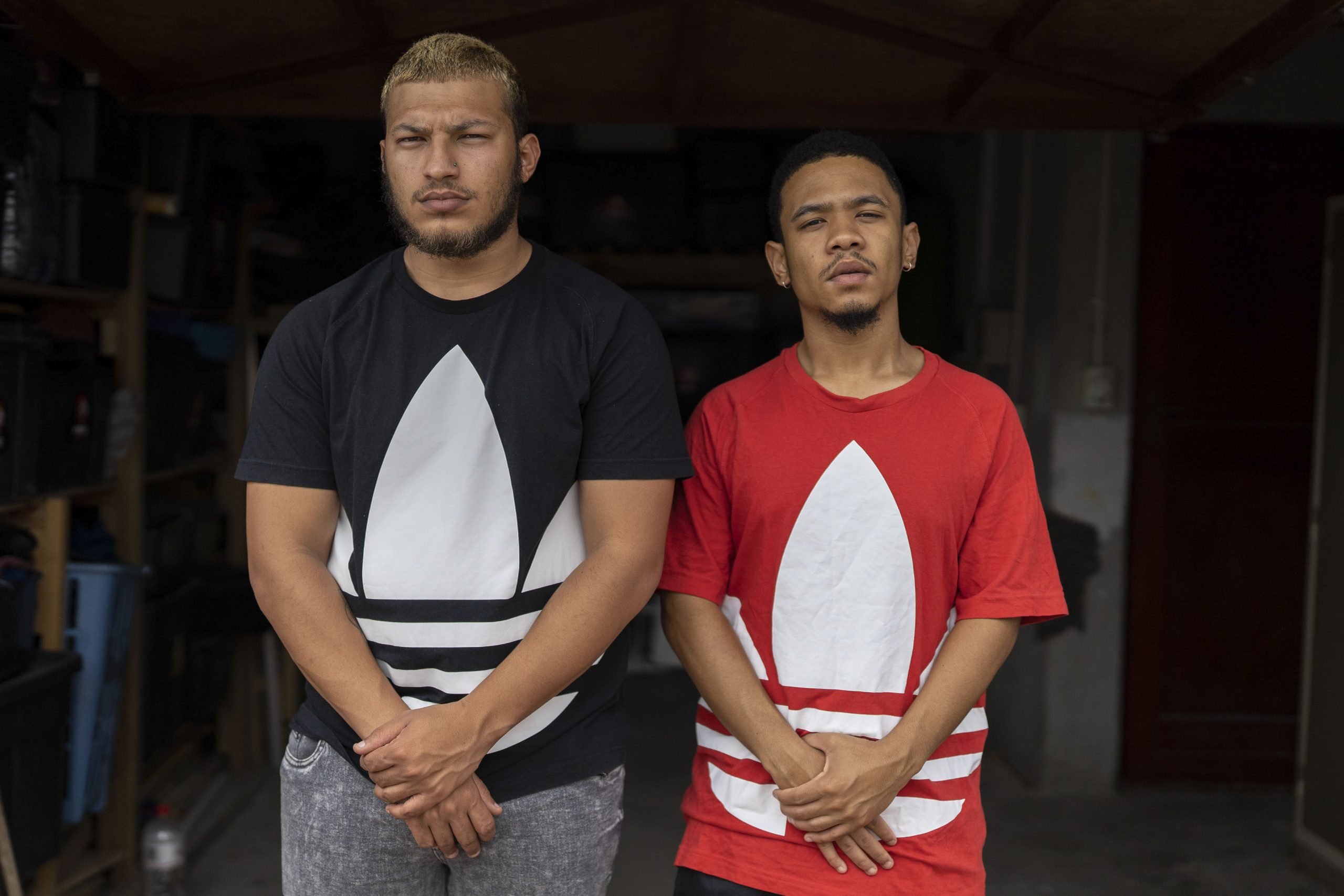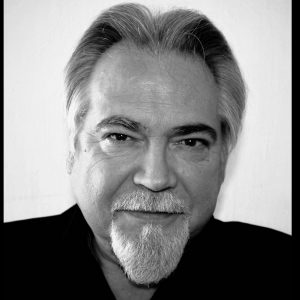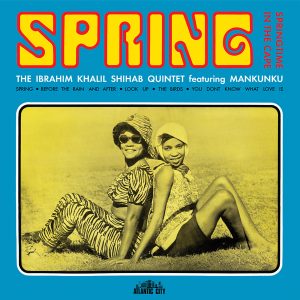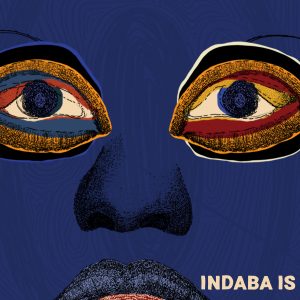Long Read | Yaadt music, a people’s expression
There is always a song, remixed by no-one-knows-who, playing in many of the Cape’s spaces. It’s music that has become a part of the culture of the communities who produce as well as consume it.
Author:
24 December 2020

The history of yaadt music, a sound born in the Cape and its surrounding towns, is shrouded in obscurity and erasure – just like the history of the people to whom it belongs. It is made in communion. As a sound, yaadt is rooted in muscle-memory and expressed in action.
It is dancing to My Lady Soul and everyone singing “my leg is sore” instead. It is the sound of Tribal Blast and Debbie Gibson’s Together for a While. It is the feeling of bending the lyrics to Meisie Kyk Hoe Lyk Jou Hare. There’s a reason you can’t find that yaadt mix of Heaven Knows on Spotify. Why that is so is perhaps best answered by the statement: “If you know, you know.”
In one sense, yaadt is the music of an older generation, packaged anew. It’s deeply contextual. DJ Cody Losper explains: “It’s the music you listen to on Boxing Day when you go to Sea Point with your whole family, with a bak (tupperware) of yesterday’s curry.”
Related article:
Yaadt music is founded in a specific experience. Physically speaking, a yaadt is a smokkie (tavern) or backyard where people drink. And a yaadt number was that track that always played on the yaadt. Old-school numbers by Sybil, Whitney Houston, and Debelah Morgan come to mind. The originals of these classics are played alongside their remixed versions.
About this music, Media Studies professor at the University of Cape Town Adam Haupt says: “It’s a very class-and-race-specific kind of experience.” Speaking to producers, scholars, DJs and Capetonians reveals the depth and complexities of yaadt music. It reveals, also, just how far-reaching yaadt is – linking yaadt as a sound, experience, lifestyle and cultural product of the community classified under apartheid as coloured who live in Cape Town and its surrounds.
Tracing origins
Thinking about the origins of yaadt, DJ Ashwin Middleway, who goes by the moniker W.NN.E, says: “As the music has been passed through over the years the credits got lost. I mean, we have music with no proper titles or artist names except for a lyric that we think the vocalist is saying in the hook and to us that’s the title.”
Yaadt is made in communion, and the practice of listening plays just as important a role in its production as other inputs. And, partly because of that, it might be inaccurate to view it simply as another genre. DJ Portia reminisces about “back in the day, when spring-cleaning on a Saturday morning, hearing the neighbours playing those tribal remixes”.
This nostalgia is also a key part of the music’s content. Club owner DJ Renno casually remarks: “No one knows who created it but it used to moer (bang).” One only had to “throw a beat over an old-school track”.
“It’s a sampling game, it’s not unlike hip-hop sampling,” Haupt says, emphasising the significance of memory and lived experience within sampling choices. It’s in the way that this beat is treated, seamlessly merging into the original track, that the sound emerges. Writer Mandy Alexander smiles as she says that with yaadt music “there’s an extra beat that’s in there, but it’s making sense”.
Related article:
Yaadt is also, and perhaps most critically, identifiable as a feeling. Comedian Simon Orgill immediately hums an instantly recognisable yaadt beat to demonstrate this to me. “And you know which one I’m talking about,” he says, as he starts humming the opening notes to the iconic Kingston Town remix. “The feeling that came with it was definitely a hoya feeling,” he says. There is a kind of emotion the music induces, an urgency of the dancefloor and ecstasy of celebration.
“There is no such genre as yaadt per se but we relate to it as yaadt music,” says vocalist and DJ Maloo The Specialist, who describes himself as a deep-house cat inspired by Kaytranada.
The yaadt sound has evolved. “[It is] not as tinny [as] when you would throw it into Virtual DJ [a computer application],” says DJ Renno. Orgil says the sound, now carefully produced, has “become more fine-tuned”.

Class aspirations
Cultural practices are not without their politics. Maloo The Specialist speaks openly about the stigma that accompanies yaadt and how the way you position yourself can affect your booking prospects at major music festivals. He says the sound is rejected by some in the city of Cape Town and surrounds especially.
“Everyone knows that yaadt is what makes the jol ruk (ignites the party) so why are DJs so quick to distance selves from it? But those very same Capetonians are the ones that, when the track plays, are like ‘Jassis, that’s my number one.’ You know what I mean?” says Maloo The Specialist.
“It’s class aspiration,” Haupt says. “If you aspire to a certain class position, you reject certain cultural practices.”
Related article:
Alexander is frank and considered as she speaks to me about this classism in yaadt and the politics of the dancefloor. She situates yaadt within the bigger picture of capitalism, colonialism and apartheid. “Within yaadt, there is classism,” she points out. “The industry is a microcosm of the bigger Cape Town issues… You’re still dependent on a white person saying, ‘OK you are worthy of playing now’.”
When it comes to yaadt, most people interviewed mentioned DJ Chello as the ubiquitous favourite. DJ Maloo says DJ Chello’s tracks have saved him many times “when I was losing the floor and I’m like, oh shit, what do I do now? Then I play [a DJ Chello track] and I get the floor back and I’m like, yes, thank you Chello!” Orgill says, “If DJ Chello had to go to [California music festival] Coachella, I promise you that, over there, they would classify it as house music and people will jol to it.”

Joy and vulnerability
Contemplating the joy and afbriek (revelry) of yaadt, Alexander says: “[It is] like watching a coloured man who would have to be so hard all the time, have to kap aan (carry on), and can’t show that vulnerability. Singing to a DJ Chello mix of Adele, for example, they are such vulnerable lyrics. Maybe it’s unconscious, but here you have this man expressing himself.” She reflects that yaadt perhaps creates space for vulnerability in unforgiving spaces that often don’t allow for it.
“It’s therapy for our people,” says Alexander. “We’re trying to survive. When yaadt is being played, you kind of forget about the physical space that you’re in.”

“I miss it, hey,” Simon Orgill says, smiling. There’s an undertone of nostalgia in his voice. But yaadt is not gone, it’s still around. “But you’re not the same,” Simon Orgill says, hitting the nail on the head, “and that’s the thing…
“We no longer go to those garage jolle (parties), we’ve grown up, gotten a bit dikker (fatter), maybe even more refined now… It’s not even that. It’s the whole collective of how our circle is two or three people we’ll go out with, whereas we used to be vrags (in large groups), and when we used to go to parties, we’d see the other vrags.”
DJ Renno agrees: “Nobody wants to sacrifice their house anymore.” Not many people want to have people come into their space for a jol.
Pioneers in obscurity
There are pioneers like Superfly, DJ Gabi, DJ Jossie, the late DJ Tubbs and others that exist in obscurity while their tracks live on. The iconic yaadt remix of Bobby Hendricks’ Clap Clap, known to some as Pom Pom, since the addition of these words: “jou hare kannie pom pom nie” (your hair cannot go into a ponytail). The track is still popular. However, the man who remixed and produced it, Jason Roberts, is not well known. Roberts, now 46, is married and a father to three boys.
“In my mind, if I sort of played the Bobby Hendricks, with that Sume Sigh Say by House of Gypsies background, it just worked out beautifully and I went home and that same night I did it. It was probably an hour to create. Process-wise, it’s not a very technical track on the PC. It was just the idea that worked that made the song successful.”
While the remix has endured and is still played at many Cape Town weddings and jols today, Roberts himself is most surprised at being interviewed about it.
Related article:
In the late 1990s and early 2000s, social media did not exist as a distribution channel. “When we used to make these tracks, we wouldn’t really get recognition for it and that is why we used to put our names in the song, Roberts says. “That time people were ripping CDs – copying it, renaming it, sending it to friends.”
Online and offline, there is often talk that “coloured culture” does not exist. This is both inaccurate and problematic.
“This racist crap that, oh, coloureds don’t have a culture – really?” Haupt asks. “Let’s talk about Bobby Hendricks and the fact that a generation of artists went, ‘let’s sample this cat’. What a mix does is it invites you to reverse-engineer the music.” Haupt highly regards these yaadt DJs, and considers their role to be that of Black cultural historiographers. The music, he says, acts as an activation of collective memory.
Searching for Net Liggies
A newer yaadt song everyone agrees is a classic is Net Liggies, which was popular for many festive seasons. The video was posted in 2014. But no one I spoke to could tell me who made the song.
“I love the music video,” Orgill says, while laughing, “cause it’s a man just dancing in his overalls. And it’s the most hilarious thing cause, like, who the fuck is this Jeff? I don’t know. But Net Liggies takes me back.”
Who the fuck is Jeff? I also wanted to know, so I tracked down Saldanha-based film-maker Emmerson William who uploaded the Net Liggies video on YouTube. He says he does not know who the producer of the song is. “We asked my friend’s uncle to be the man in the video, we shot the video while he was dancing on the song but I wasn’t expecting that much views.”
If I really wanted to discover the artist behind the song, I had to look beyond Cape Town, Losper advised. “If you wanna find out the true essence of where this thing comes from, you must ma take a rytjie (take a ride) outside of Cape Town.”
On the genesis of the sound, Northern Suburbs-based Surreal Sessions says: “There’s a culture [in] the smallest towns out of Cape Town where they make rugby anthems specific to their teams in the community. Homies in the platteland are making sounds like it could have been produced by Master KG. Net Liggies was kids from Worcester.”

Surreal Sessions was right. When I finally found the producer behind the Net Liggies beat it was in Worcester. It is 23-year-old Darryl Davids, now known as DJ Lil D. He was around 14 years old when he produced the song.
“I started making beats around the age of 10 or 11 years old. I used to make beats on school desks. I remember my first beat I’d ever made was a hip hop beat on a program called Fl studio,” Davids says. He has gone on to produce beats for big names, like Die Antwoord. He made the beat for the Die Antwoord song Baita Jou Sabela, featuring Slagysta. “My biggest influences as a beatmaker and artist are celebrities on television like Distruction Boyz and Babes Wodumo.”
The choice of words used in certain yaadt songs and the language used in response to it reflects a culture. It brings out celebration, or joy mixed with nostalgia, within the Cape Town coloured community especially. “Doen it Net Liggies” in Davids’ classic anthem, for example, fits with iconic statements heard whenever certain songs, including yaadt songs, are played – and in spaces like high school cheerleading. Examples would be, “Waas jou nanas”, “Stamp jou boude lam”, “Papsak en n Kus”, “Wie Maakie jol vol” and Pom pom. Translating these terms does not do them justice. But they are the language of fun and revelry with music in the background. And this language has become lore. In the songs, you now find a body of knowledge, tradition and culture passed down generations.
For the culture
Yaadts (smokkies) exist outside of the law and yaadt tracks exist outside the confines of capitalism. Both are revolutionary in that they seem to undermine systems that confine and often oppress us legally, economically and socially.
The music has evolved from struggle. “We have [a] massive rich culture as coloured people and it’s all on the outskirts,” says Losper. He says that the topic of yaadt music, linked with coloured people’s struggles and the dop system is worthy of a thesis.
Losper does not shy away from the darker genesis of this music or its social landscapes. This kind of oppression is still alive today, he says of the dop system. This system, though banned, persists in other forms within the community. And these struggles get expressed in the music eventually. “And music is always a means of escape,” Losper says.
Related article:
“I didn’t expect to get money back from it,” Roberts says, reflecting on producing Pom Pom. “I know I wasn’t following the proper processes with getting ‘their’ permission and getting it on a label, maybe, and getting registrations to give me royalties and things. I wasn’t really interested in that. It was just about making the songs, getting the crowd’s response, seeing them appreciate it and for me that was enough.”
Yaadt music has never needed a middle man for distribution. It goes from cellphones to flash drives, burned CDs and YouTube links in quick-moving underground networks.
“It’s a good and bad thing,” says Alexander. “Producers find other ways to get their music across; they’re not concerned about Universal [Music Group] buying their songs…” Yaadt is not dependent on commercial channels.
Haupt adds: “Even if you try to locate the person and hit them up with damages, no money was made, it was just a mix. It’s not for commercial purposes and I think that’s fine, it’s just about the culture and so it’s not easy to commodify.”
“I like the fact that it’s generational,” Orgill says. “It’s an identifying factor of Cape Town as well as us. I hope that we have time capsules for these little things that make us, us.”
The future and festive
Is there a future for this music? “Each one teach one,” says Maloo The Specialist. He is currently running a DJ school called Maloosabi DJ Academy. He is teaching his 16-year-old son some skills too. His advice, he says, is: “Respect the ones who paved the way before you. Stay humble, stay open-minded, people are learning. And always ask for a deposit.”
Maloo The Specialist was around 11 years old when he first experienced a yaadt song. Sandwiches played while he was at a yaadt in Clarke Estate, Elsiesriver. “That was the first time I ever heard that track played over and over and over and I was like, ‘I like this song…’ That’s a cool memory for me because that’s where I started, like, ‘okay, so, this is what a yaadt is about’.”
Related article:
The joy of hearing a yaadt track cannot be explained so much as felt. It will take you back to the warm memory of being a sleepy laaitie (child) at a 50th jol (birthday party) while your uncles are dikgesuip (drunk). And you will realise that, in some ways, you have become that uncle, and you understand it differently now. But it’s still kak (profoundly) familiar.
Yaadt is festive. Breaking free through dance and celebration after carrying much too much of life’s burdens. It’s an aux cable and a cooler box by the ocean, and on the yaadt. It may be a thousand bootleg copies but, ultimately, it is ours – a form of culture produced by a community over generations.






